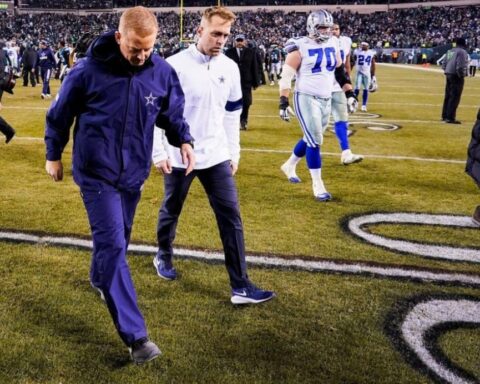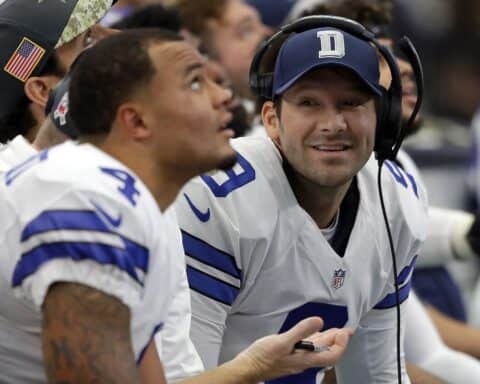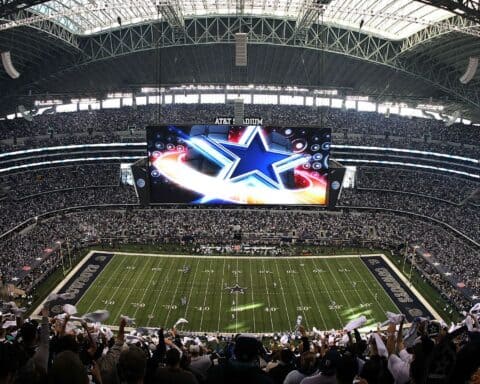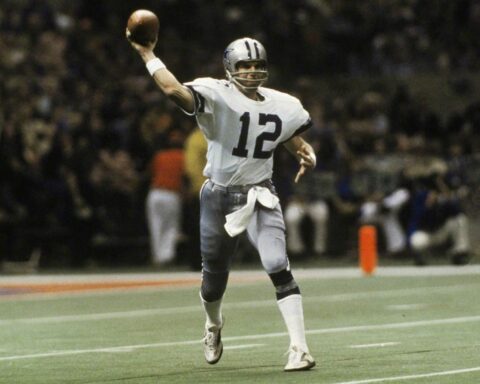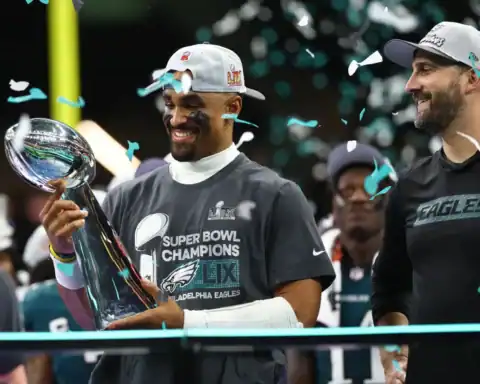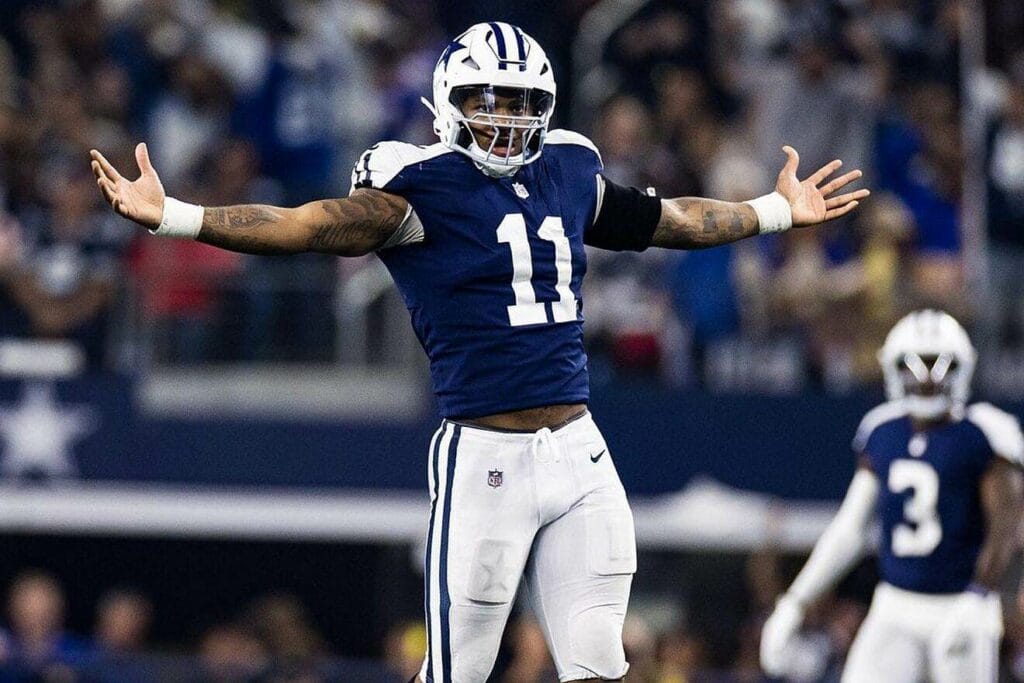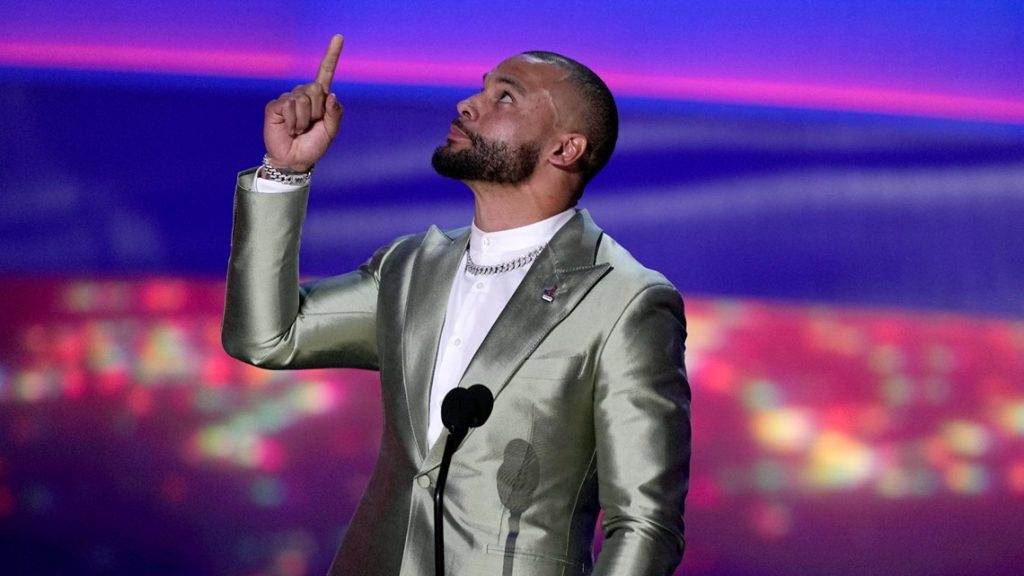If the 1971 season could best be described as chaos that led to a championship, then the 1972 season was turmoil that led to disappointment.
The Duane Thomas saga continued to spiral downward in the offseason. Thomas had refused to speak to players, coaches, or the media the entire 1971 season.
The Cowboys finally had enough and shipped him off to the Chargers at the end of July. Thomas refused to report to San Diego and was placed on the reserve list, making him ineligible for the 1972 season.
Free of that drama, the Cowboys set out to defend their championship. But in the third preseason game against Los Angeles, the Rams’ Marlin McKeever injured Roger Staubach on a tackle.
The Cowboys’ quarterback would require shoulder surgery. Craig Morton would start all 14 games for Dallas in 1972 and Staubach would not return to action until mid-November.
The Cowboys would make the playoffs, but they always seemed out of sorts following Staubach’s injury.
America’s Sweethearts
On the brighter side, the Dallas Cowboys Cheerleaders squad – also known as America’s Sweethearts — made their debut in 1972. The idea had its genesis from a 1967 game at the Cotton Bowl.
A locally famous stripper named Bubbles Cash strolled down the stands at midfield with cotton candy in each hand. That, and the crowd’s reaction, caught the attention of Tex Schramm.

The Cowboys had cheerleaders on the sidelines at the time. But they were recruits from local high schools. Both male and female — known as the “Cow Belles and Beaux” — they would perform the typical acrobatic routines found on high school and college sidelines.
In 1970, aware of the entertainment side of NFL games, this was changed to just an all-female squad. In 1972 the requirement was all-women, and all above the age of 18.

Also gone were the tradition cheerleader skirts. The age of hot pants on the sidelines at Texas Stadium had arrived and the squad took on a life of its own shortly after.
Continued Success On The Field
Despite the loss of Staubach, the Cowboys continued their winning ways on the field. Morton guided the team to wins over the Eagles (28-6) and Giants (23-14) to open the season.
But a pair of fumbles and three Morton interceptions led to a 16-13 loss at Green Bay the following week. Morton struggles continued the next week against the Steelers, throwing two more picks.
A Bob Hayes fumble was recovered by Mel Blount, who raced 35 yards for a score and a 13-3 lead in the second quarter. Calvin Hill made it 13-10 at halftime with a 1-yard run.
With Morton unable to hit the broad side of a barn, Hill hit Ron Sellers on a 55-yard pass to make it 17-13 in the third quarter. The Cowboys’ defense made it stand up the rest of the way.
Morton had a better game, throwing two touchdowns but also two more picks, in a 21-0 win over Baltimore. The Cowboys would jump out to a 20-7 lead over the Redskins only to give up 17 unanswered points in a critical 24-20 loss.
The victory put Washington into first place in the NFC East. They would never relinquish that lead, nor even let the Cowboys tie them for first the rest of the way.
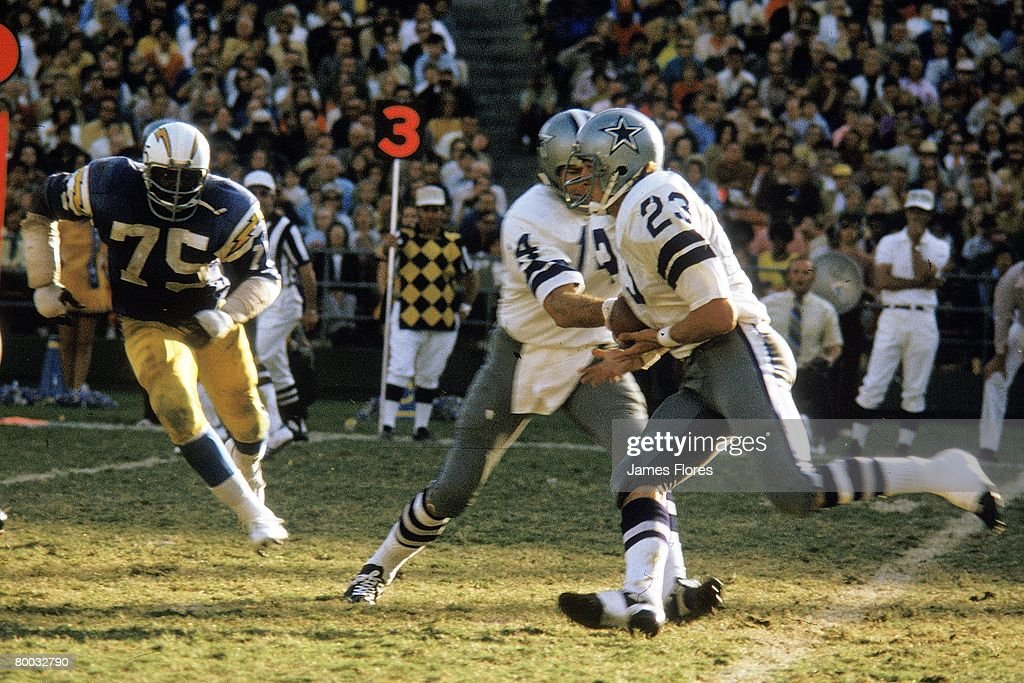
Dallas would reel off four straight wins – Detroit (28-24), San Diego (34-28), St. Louis (33-24) and Philadelphia (28-7) – to keep the pressure on Washington.
But a 31-10 loss to the 49ers dropped them two full games behind Washington. Wins against St. Louis (27-6) and the Redskins (34-24) were not enough to close the gap.
The Cowboys closed out the regular season with a dud, falling to the Giants at home, 23-3. At 10-4, Dallas still made the playoffs as the wildcard team.
The Return Of Captain Comeback
Staubach had returned to action for the final four games of the season, but finished just 9-of-20 passing with no touchdowns and two interceptions.
Morton started the Divisional round game at San Francisco. The Cowboys got off to a rough start, allowing Vic Washington to return the opening kickoff 97 yards for a touchdown.
Morton tossed a 28-yard touchdown pass to Lance Alworth to close out the first half, but also threw two more interceptions.

Irving, TX 1/2/1972
CREDIT: Walter Iooss Jr. (Photo by Walter Iooss Jr. /Sports Illustrated via Getty Images)
By the end of the third quarter, Dallas trailed 28-13 and Landry had seen enough. He inserted Staubach into the game. Captain Comeback didn’t disappoint.
After a Toni Fritsch field cut the lead to 12, Staubach connected with Billy Parks on a 20-yard pass to cut the lead to 28-23.
In the final minute of the game at Candlestick Park, Staubach hit Ron Sellers over the middle for a 10-yard touchdown and a 30-28 win.
A Disappointing End
But a third straight trip to the Super Bowl – and a rematch with the unbeaten Dolphins — was not to be. Staubach would start the NFC Championship game as the Cowboys faced the Redskins for the third time in 1972.
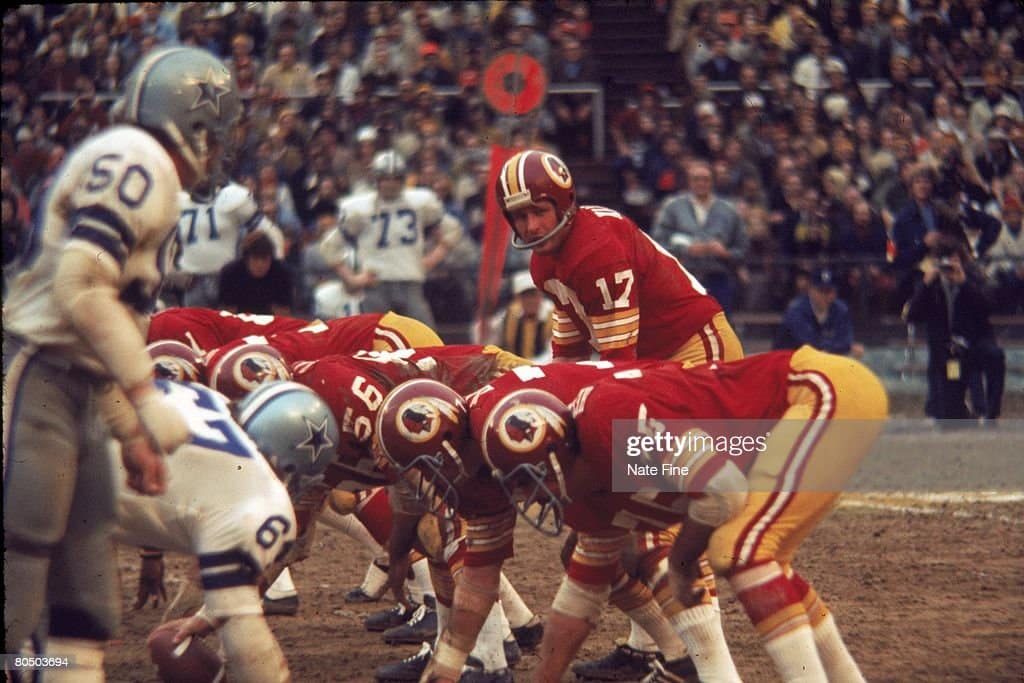
But Staubach would only complete 9-of-20 passes for 98 yards and no touchdowns. He would lead the team in rushing with 55 yards and throw no interceptions.
A Calvin Hill fumble would be the only Cowboys’ turnover in the game. But the offense would only generate a 35-yard field goal by Fritsch in a 26-3 loss to Washington to end the season.



